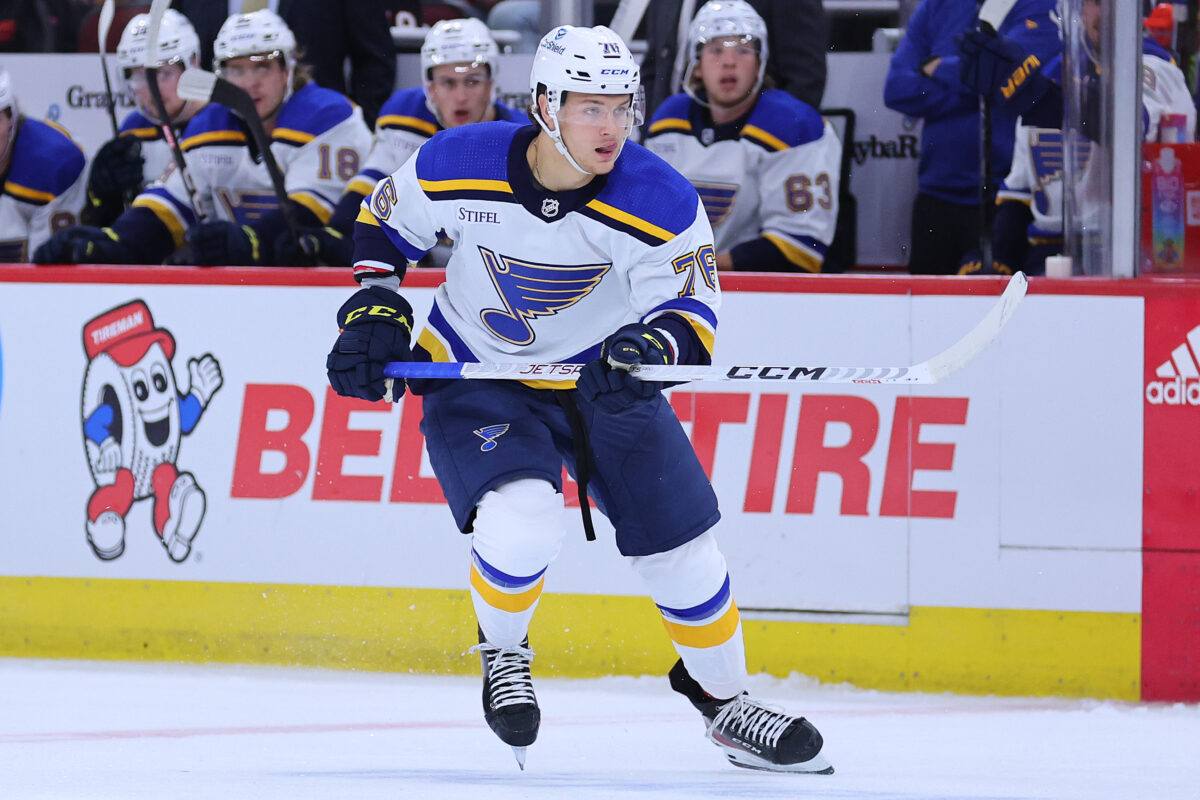The Montreal Canadiens aren’t just turning a corner—they’re already halfway down the street. After years of laying the groundwork, they’ve reached a point where a playoff spot isn’t a pipe dream; it’s an expectation. Heading into the 2025–26 season, there’s a new energy around the team. This is no longer a franchise in the patient, quiet phase of a rebuild. They’re entering the competitive stage, ready to challenge the Atlantic Division’s heavyweights.
Related: Canadiens Moving Price’s Contract Could Open the Door for Other Moves
With a core of homegrown talent, shrewd trades, and a few well-timed veteran additions, Montreal has shifted from “up-and-coming” to “a problem for opponents.” Plenty of teams talk about taking the next step. The difference is that the Canadiens have already begun their climb.
The Canadiens Are an Example of Patience to Progress
The Canadiens’ surprise playoff berth last season came just three years into their rebuild—a much faster turnaround than most predicted. That kind of leap doesn’t happen by luck. It comes from a deliberate plan, executed with discipline, and a willingness to adapt when circumstances change.
General manager Kent Hughes has been the architect of this transformation since assuming the role. Every move, whether bold or subtle, has served a purpose. Montreal’s ahead of schedule, and that’s not a coincidence—it’s a testament to a clear, consistent vision.
Kent Hughes’ Blueprint: Bold but Calculated
When Hughes arrived, he didn’t promise miracles. He promised a proper build—no shortcuts, no “win-now-at-all-costs” gambles. But that didn’t mean moving slowly. Instead, he’s found ways to accelerate the process without undermining long-term stability. His philosophy is simple: build through the draft, but be ready to strike when the right player becomes available.
Related: Canadiens’ Bold Move: Can Patrik Laine Thrive in Montreal?
The Noah Dobson trade is the perfect example. Hughes sent two first-round picks to the New York Islanders for a 25-year-old, right-shot defenseman who can quarterback a power play and eat big minutes. That’s not just a win-now gamble—it’s a move for a player who aligns with the team’s age curve and identity.
The Logan Mailloux-for-Zachary Bolduc swap fits the same pattern. These weren’t random transactions. They were calculated upgrades made with the belief that Montreal’s young core was ready for meaningful reinforcements.

(Photo by Michael Reaves/Getty Images)
And when the Canadiens went on their late-season surge last year, Hughes made another key decision—he stood pat at the deadline. Instead of flipping expiring contracts for picks, he backed the group he had. That sent a clear message to the locker room: management believes in you.
Culture Is More Than a Buzzword in Montreal
One of Hughes’ quieter successes has been building a team culture that feels genuine. It’s easy for executives to talk about “values” and “identity,” but the Canadiens have made it real.
Players notice when they’re respected, supported, and trusted to play their game. That matters—especially in Montreal, where media pressure and fan expectations can be intense. Creating an environment where players want to stay is a competitive advantage, and it’s starting to show in free agency.
Related: Carey Price: Saying Farewell to a Canadiens Legend
In a league with a hard salary cap, where you can’t just buy your way out of mistakes, culture helps bridge the gap. It’s the thing that keeps players invested and committed to the team’s long-term vision.
Martin St. Louis’ Modern Hockey Has Reshaped the Canadiens’ Style
Behind the bench, head coach Martin St. Louis has reshaped Montreal’s style of play into something fast, skilled, and dangerous. Since taking over in 2022, he’s transformed a raw, developing roster into one of the league’s more exciting teams to watch.
Forget dump-and-chase—this is a puck-possession team. St. Louis wants speed through the middle, quick transitions, and creativity in the offensive zone. Mistakes aren’t punished with benchings—they’re treated as learning moments.
This approach has allowed players such as Nick Suzuki to flourish. The addition of Ivan Demidov and Bolduc adds even more offensive depth, while Dobson and Lane Hutson give the Canadiens the puck-moving blueliners needed to push the pace from the back end. It’s a style of hockey designed not only to win games, but also to develop skills and confidence over time. And it’s paying off.
The most striking part of Montreal’s current rise is the unity between the front office, coaching staff, and players. Hughes is building for sustained success. St. Louis is coaching to win now, without mortgaging the future. And the players are buying in fully.
This kind of alignment is rare in pro sports. It means every decision—from a draft pick to a midseason call-up—serves the same overall purpose. That’s how you build something that lasts.
What Comes Next for the Canadiens?
The Canadiens aren’t a finished product. They’ll need to navigate the tricky balance between developing their young stars and adding the right veterans to support them. The Atlantic Division is loaded, and staying competitive won’t be easy. But for the first time in years, Montreal isn’t just trying to claw its way into the conversation. They’re part of it. And if they can keep building without losing their identity, this group could be a legitimate contender sooner than anyone expected.
Related: Dubas Nearly Never Leafs GM, Canadiens Trade & NHL More Rumors
For fans in Montreal, this is the payoff for the patience shown through the lean years. The journey isn’t over, but the days of hoping for lottery luck are gone. The Canadiens are in the fight again—and this time, they look ready to stay there.
[Note: I’d like to thank Brent Bradford (PhD) for his help co-authoring this post. His profile can be found at www.linkedin.com/in/brent-bradford-phd-3a10022a9]
